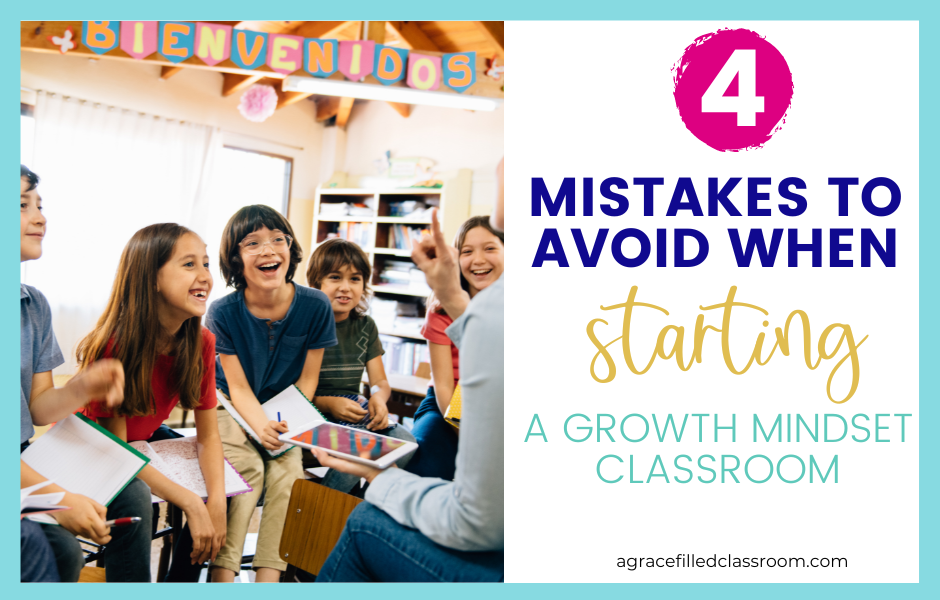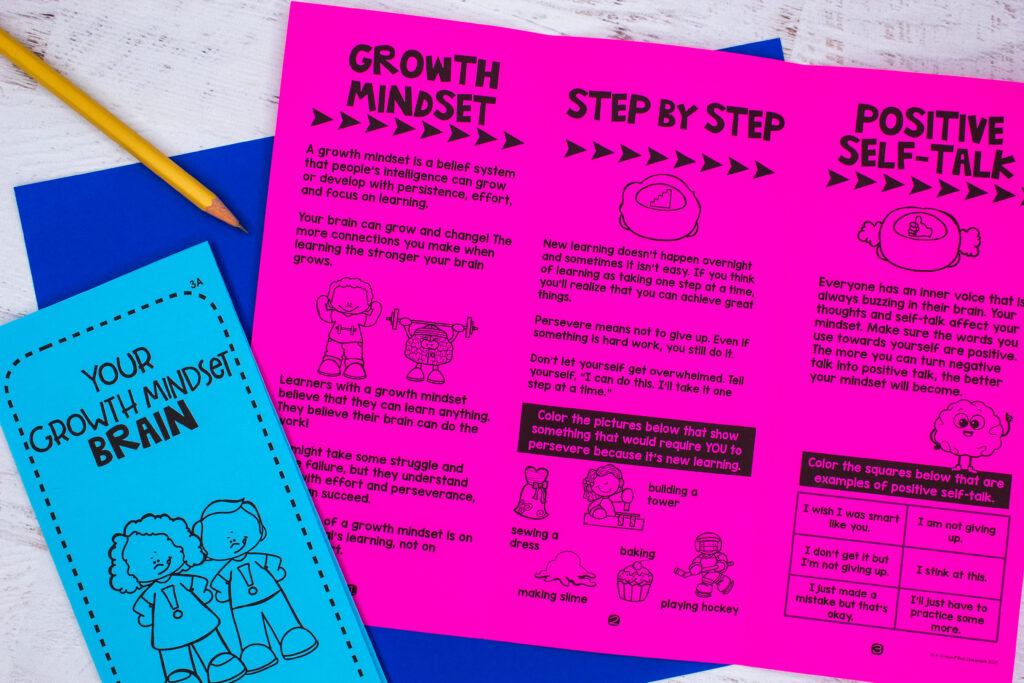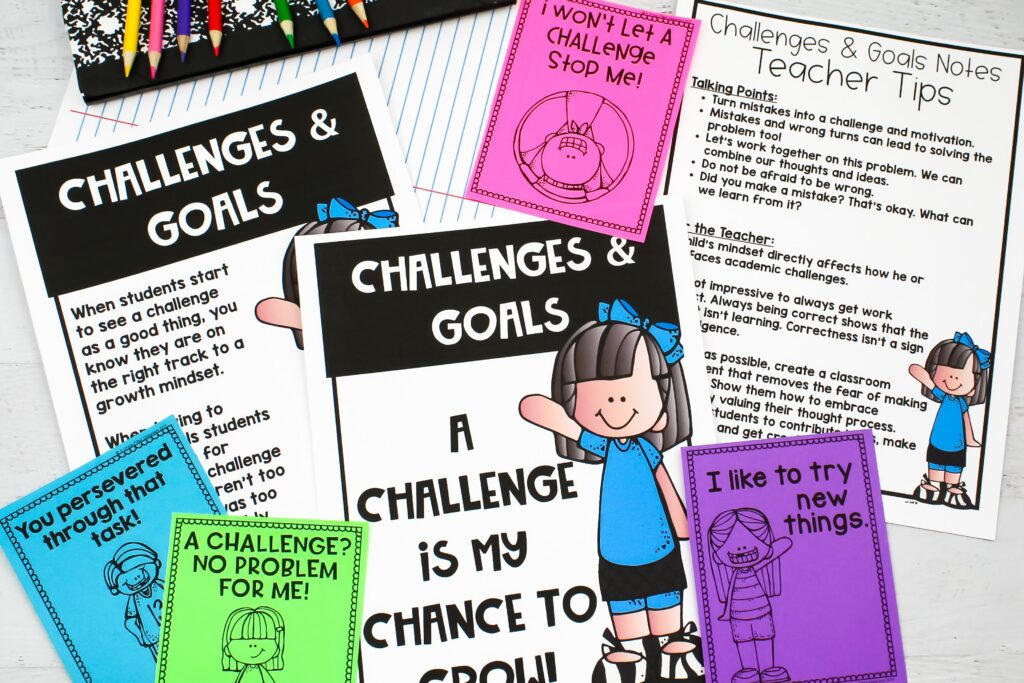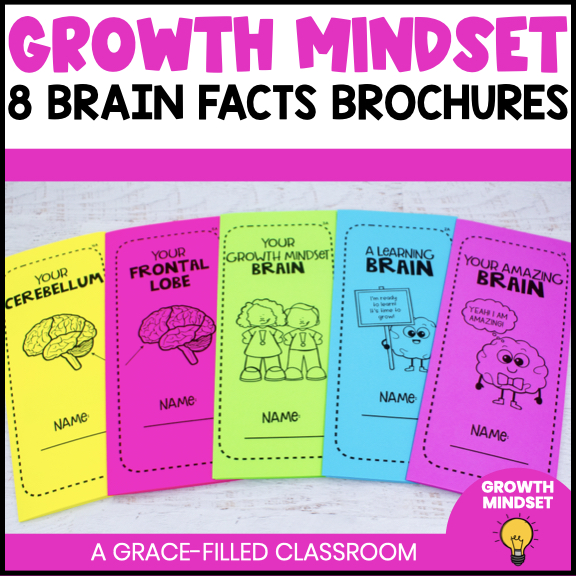Starting a growth mindset classroom can be quite challenging! In this blog post, I will share some of the mistakes I made when I began implementing a growth mindset in my classroom, so you can avoid them. As a passionate advocate for a growth mindset, I believed it was the key to unlocking my students' potential. However, I quickly realized that it wasn't all smooth sailing.
Whether you've been fostering a growth mindset for a while or are just starting out, I want to share some tips that have personally helped me. Now, it's important to note that I am by no means an expert in the field. I don't have a direct line to Carol Dweck or Jo Boaler for regular mindset discussions. What I can tell you is that these tips have proven successful for me in the past, and others have found success with them as well. So, let's dive in and explore some practical strategies that might work for you too!

Initially, in my efforts to teach and foster a growth mindset, I made the mistake of introducing the concept of a fixed mindset to my students. However, what they ended up hearing were just new labels to categorize themselves under. It became a binary distinction where they either had a fixed mindset or a growth mindset. Unfortunately, the term “fixed mindset” only perpetuated the idea of yet another negative label.
Let's take John as an example. I would say something like, “Oh, John, you can learn how to subtract with regrouping. Don't have a fixed mindset about it. Let's give it another try.” But what did John really hear? Did he perceive any encouragement or feel supported in his learning journey? Not at all. All he registered was, “Here's another thing you're not doing well. Don't have a fixed mindset.” Unfortunately, this approach unintentionally discouraged him and hindered his confidence.
So, what should I have done differently? Instead of focusing on fixed versus growth mindsets, I could have employed a more positive approach. For instance, I could have said, “Oh John, I noticed you're working on subtraction with regrouping. I can tell it doesn't excite you right now. But remember, the more we practice, the more connections our brain will make. It might feel challenging, but we won't give up. I'll support you until you truly believe in your abilities because I know you can do it.”
By combining positive affirmations and fostering a growth mindset through brain-based discussions (more on that later), we can gradually shift our students' mindsets over time.
Children and even most adults may not have studied the intricacies of the brain. However, those who have explored this field have discovered fascinating insights into how the brain functions and how we learn. By taking the time to teach our students about their own brains in the context of starting a growth mindset classroom, we can initiate a transformative shift in their mindset towards learning and challenges.
Our brain is an extraordinary organ composed of cells and tissues, which means it has the remarkable ability to grow and change. It controls every action, thought, feeling, and even dream we experience. Activities that come naturally to us require minimal brain energy, while skills we strive to improve demand more cognitive resources.

Here's the exciting part: just like lifting weights strengthens our muscles, attempting new things and persisting without giving up actually strengthens our brain. Effort and practice are key to enhancing our brain's capacity and acquiring new skills. Moreover, it's essential to understand that our brain learns from mistakes. Every error or setback provides an opportunity for growth and learning.
I have discovered that by consistently reinforcing these “brain nuggets” with my students, they gradually internalize them, leading to a genuine transformation in their mindset. The more we emphasize these concepts, the more our students embrace the power of their own minds and the possibilities of growth.
When starting a growth mindset classroom, it is crucial to actively encourage and celebrate mistakes, risks, and challenges. These experiences are invaluable opportunities for growth and learning. Let me share a story about Sarah, a bright second grader in my class, to illustrate the importance of this approach.
Sarah consistently excelled academically and enjoyed showcasing her knowledge. However, when faced with tasks that required effort or presented a challenge, she would often shy away. Sarah feared making mistakes and being perceived as “not smart.” It was clear that she had developed a fixed mindset, believing that her abilities were fixed and limited.
To help Sarah shift her mindset, I emphasized two key phrases on a daily basis: “Mistakes help us grow too” and “If it's easy, then I'm not learning.” By connecting these messages to the concept of starting a growth mindset, I aimed to reframe her perspective on mistakes and challenges.

Consider this: when students complete tasks effortlessly and quickly, it is not a testament to our teaching but rather a reflection of their existing knowledge. These tasks require minimal brain energy since they align with their comfort zone. To foster a growth mindset, we must encourage students to step out of their comfort zones, embrace challenges, and not fear making mistakes.
By consistently reinforcing the idea that mistakes are valuable learning opportunities, students gradually develop a mindset that welcomes challenges and sees setbacks as stepping stones to growth. Sarah, for instance, left my class that year with increased confidence in her ability to make mistakes and learn from them. Her self-talk had transformed significantly since we began our journey.
When starting a growth mindset classroom, repetition plays a vital role in instilling and reinforcing growth mindset concepts. Consistently bring up important ideas, such as discussing the brain's growth potential and the power of embracing mistakes. Remind your students that effort and persistence help them overcome obstacles and achieve personal growth.
By continuously emphasizing the importance of a growth mindset, these messages gradually become internalized by your students. Over time, their self-talk begins to reflect a growth mindset perspective, helping them navigate challenges and embrace learning opportunities. When students start to incorporate growth mindset concepts into their own beliefs and actions, you know that the foundation of a growth mindset is firmly taking root in your classroom.
Remember, starting a growth mindset is an ongoing process. With repeated reinforcement and consistent integration of growth mindset principles, your students will develop a strong foundation for their learning journey.
Creating a Growth Mindset Community
Encourage a Growth Mindset All Year Long

Use the brochures to learn all about students' brains!
*Get 10% on my website's shop – use the code SAVE10

4 Different areas of Growth Mindset – includes posters, teaching ideas, and notes for your students!
*Get 10% on my website's shop – use the code SAVE10
If you’d like to come back to these ideas on starting growth mindset for later on, be sure to save this post! Just add the pin below to your favorite board on Pinterest. You’ll be able to quickly find these ideas later on.

 Teaching in a primary classroom can be overwhelming! Have you ever wondered… How can I meet all the demands of teaching and still make sure I am teaching my students to be good world citizens? How can …
Teaching in a primary classroom can be overwhelming! Have you ever wondered… How can I meet all the demands of teaching and still make sure I am teaching my students to be good world citizens? How can … A Grace-Filled Classroom is a participant in the Amazon Services LLC Associates Program, an affiliate advertising program designed to provide a means for sites to earn advertising fees by advertising and linking to Amazon.com.
Copyright © 2024 A GRACE-FILLED CLASSROOM | Terms and Conditions
